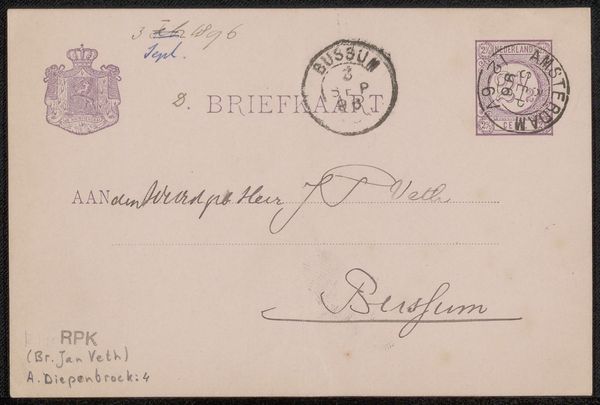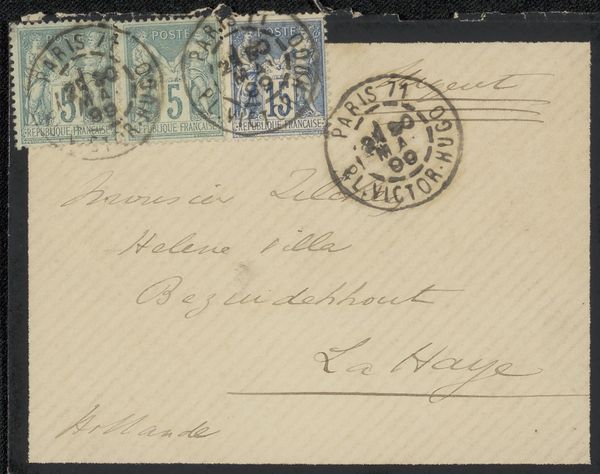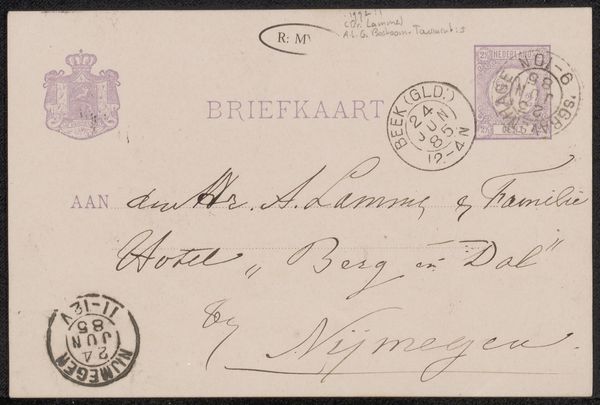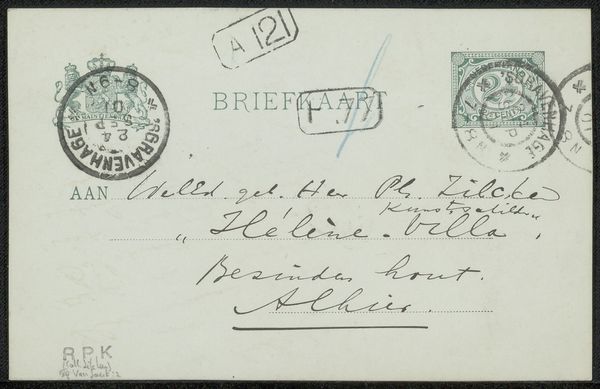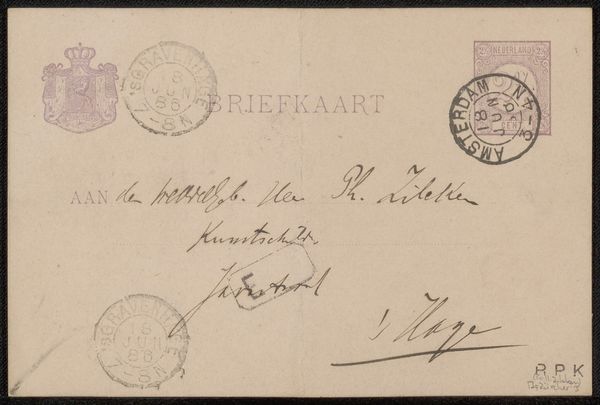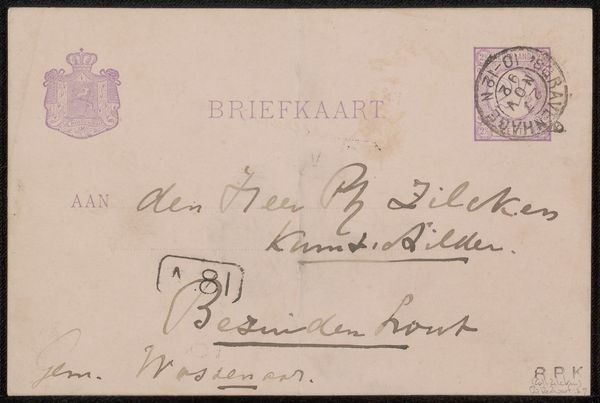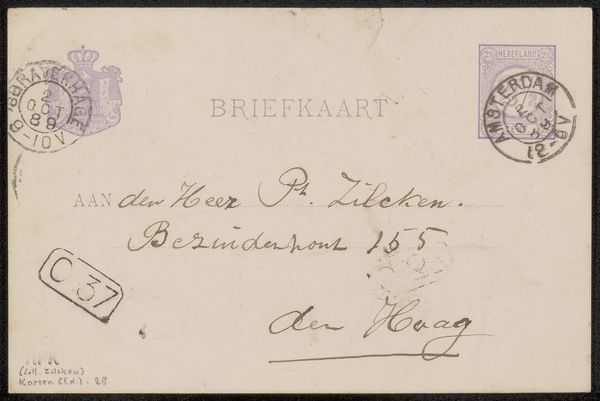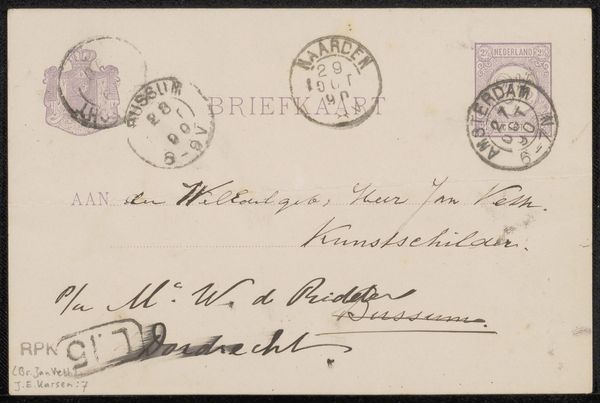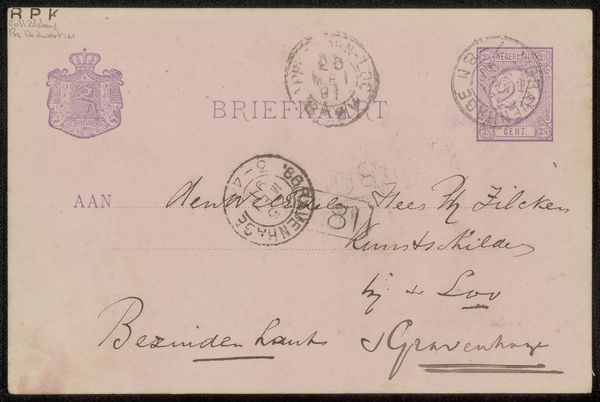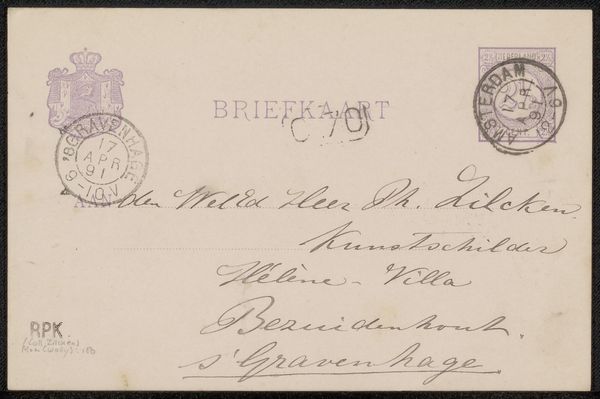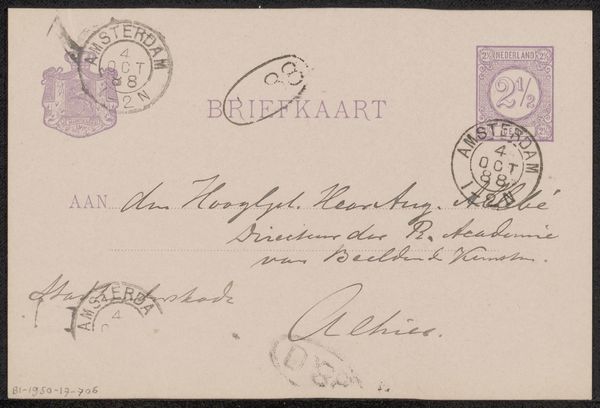
Copyright: Rijks Museum: Open Domain
Curator: Here we have "Briefkaart aan Jan Veth," a postcard to Jan Veth, possibly from 1886, created by Frederik van Eeden. It's ink on paper, held in the Rijksmuseum collection. The postcard displays hand-lettering and pen work with some amazing details. Editor: My first impression is that it’s surprisingly delicate, even intimate. You can feel the texture of the paper, the slight variations in the ink. It reads more like a personal note than official correspondence. Curator: Indeed. It’s fascinating to consider the role of such personal objects within the larger societal context. Postcards, even seemingly simple ones like this, offer us insights into the social networks and daily communications of the time. Jan Veth, the recipient, was an important figure. The choice of handwriting and the location denoted – it tells a very specific story of Dutch intellectual circles. Editor: I’m drawn to the aesthetics, though. It feels Romantic. Beyond its social context, what about its potential as art? The meticulous lettering feels almost like a protest against the uniformity of printed text, emphasizing individuality. It really highlights class structures through literacy and the conscious selection of penmanship as a form of personal expression. How was class displayed on paper, and in visual society, back then? Curator: Well, literacy was, of course, not universal. Hand-lettering like this, displays status through education, attention to design and, maybe, the writer’s desire to inject a certain elegance into everyday communications. It also creates an interesting conversation, especially within a community who saw art as part of a larger political landscape. Van Eeden's socialism surely would have been part of this message's reception. Editor: Right, this piece opens up discussions around accessibility in the late 19th century and questions of access to, and expression through, written text, art and also the circulation of these materials in public life. Even something so small serves to document access and representation, literally and figuratively. Curator: I agree, examining the postcard gives a tactile sense of the late 19th-century Dutch society. Its texture and the handwritten aspect allows for deep explorations in artistic approach. Editor: It goes to show how much complexity can be found even in the simplest-seeming artifact. I didn't expect that!
Comments
No comments
Be the first to comment and join the conversation on the ultimate creative platform.
